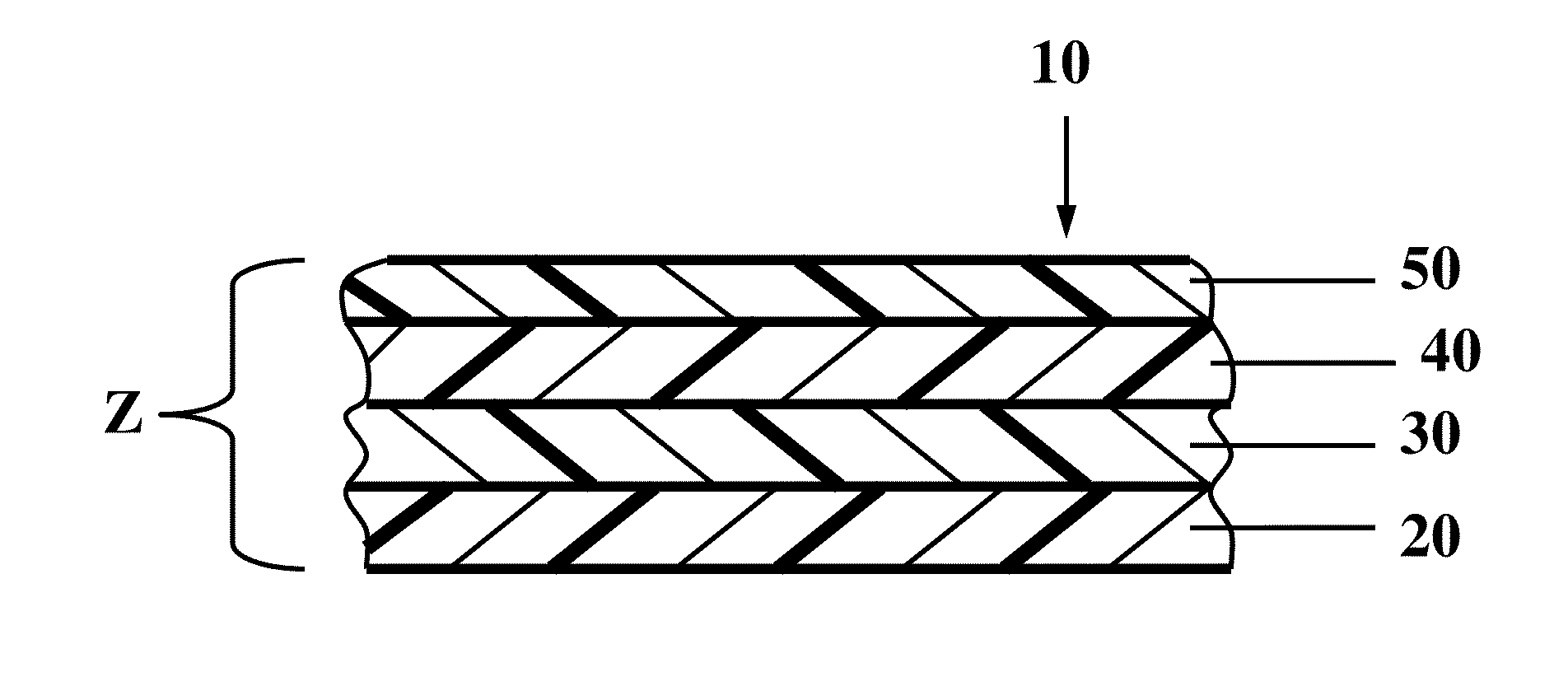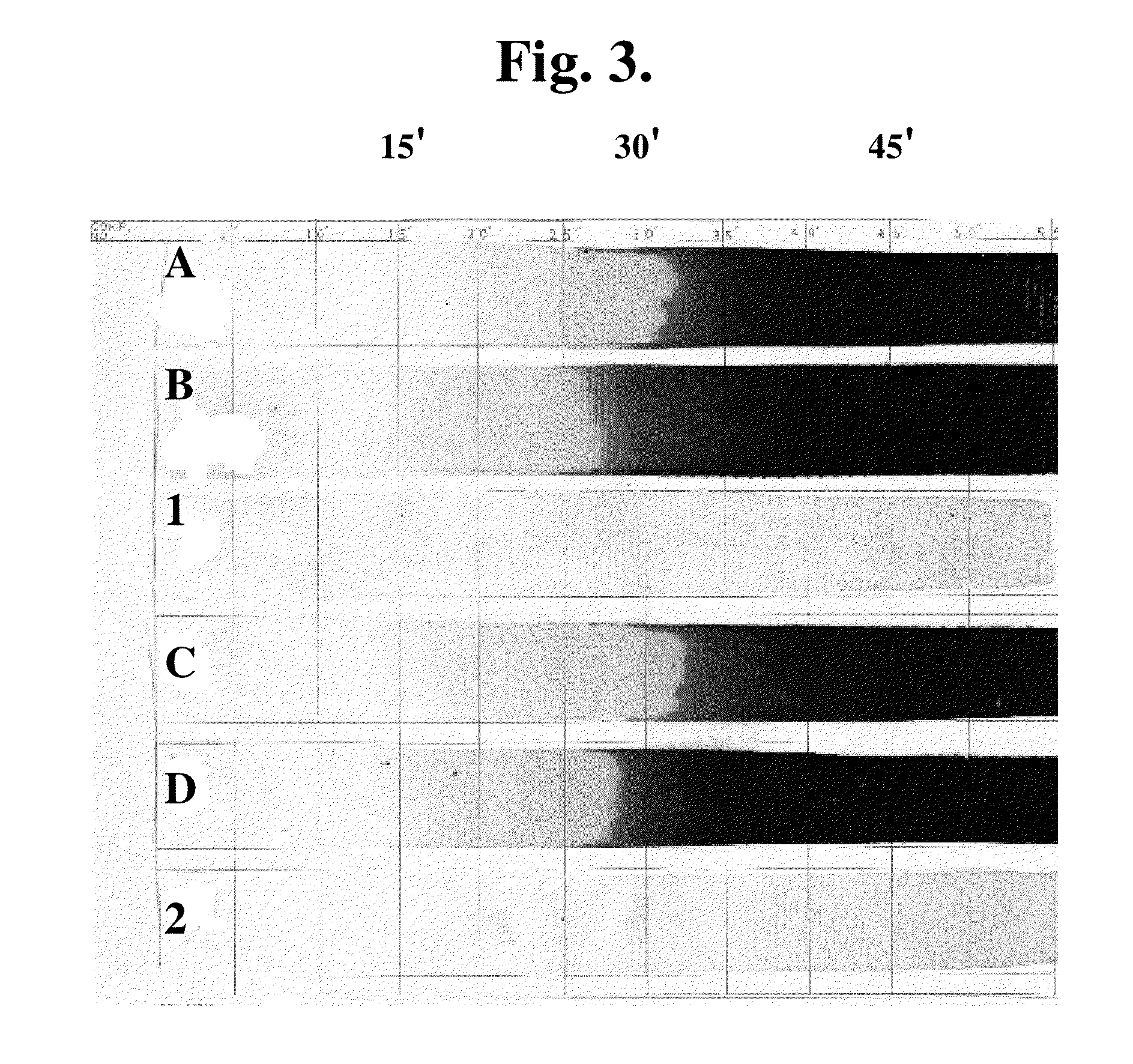Sustainable poly(vinyl chloride) mixtures for flooring products
a technology of polyvinyl chloride and flooring products, applied in the field of vinyl mixtures, can solve the problems of not being a renewable resource nor a sustainable ingredient, and achieve the effects of adequate economies of scale, excellent heat stability and other physical properties
- Summary
- Abstract
- Description
- Claims
- Application Information
AI Technical Summary
Benefits of technology
Problems solved by technology
Method used
Image
Examples
examples
[0088]Table 2 shows the source of the ingredients and the amounts used to prepare Comparative Examples A-D and Examples 1-2. Comparative Examples A and C used diisononyl phthalate (DINP), a well-known plasticizer for polyvinyl halides but one which does not have a gelation time fast enough for flooring manufacturing. Comparative Examples B and D used BBP. Examples 1 and 2 used EMS.
[0089]Comparative Examples A-D added a minor amount of epoxidized soybean oil as a additional plasticizer because it is commonly used as a thermal co-stabilizer and found in most plastisol formulations.
[0090]All Comparative Examples A-D and Examples 1-2 had a minor amount of thermal stabilizer to prevent the dehydrochlorination that can result at the temperatures commonly used to fuse plastisol.
[0091]Comparative Examples A and B and Example 1 differed from Comparative Examples C and D and Example 2 because the former set was formulated for equal amounts of plasticizer, whereas the latter set was formulated...
PUM
| Property | Measurement | Unit |
|---|---|---|
| weight percent | aaaaa | aaaaa |
| weight percent | aaaaa | aaaaa |
| weight percent | aaaaa | aaaaa |
Abstract
Description
Claims
Application Information
 Login to View More
Login to View More - R&D
- Intellectual Property
- Life Sciences
- Materials
- Tech Scout
- Unparalleled Data Quality
- Higher Quality Content
- 60% Fewer Hallucinations
Browse by: Latest US Patents, China's latest patents, Technical Efficacy Thesaurus, Application Domain, Technology Topic, Popular Technical Reports.
© 2025 PatSnap. All rights reserved.Legal|Privacy policy|Modern Slavery Act Transparency Statement|Sitemap|About US| Contact US: help@patsnap.com



